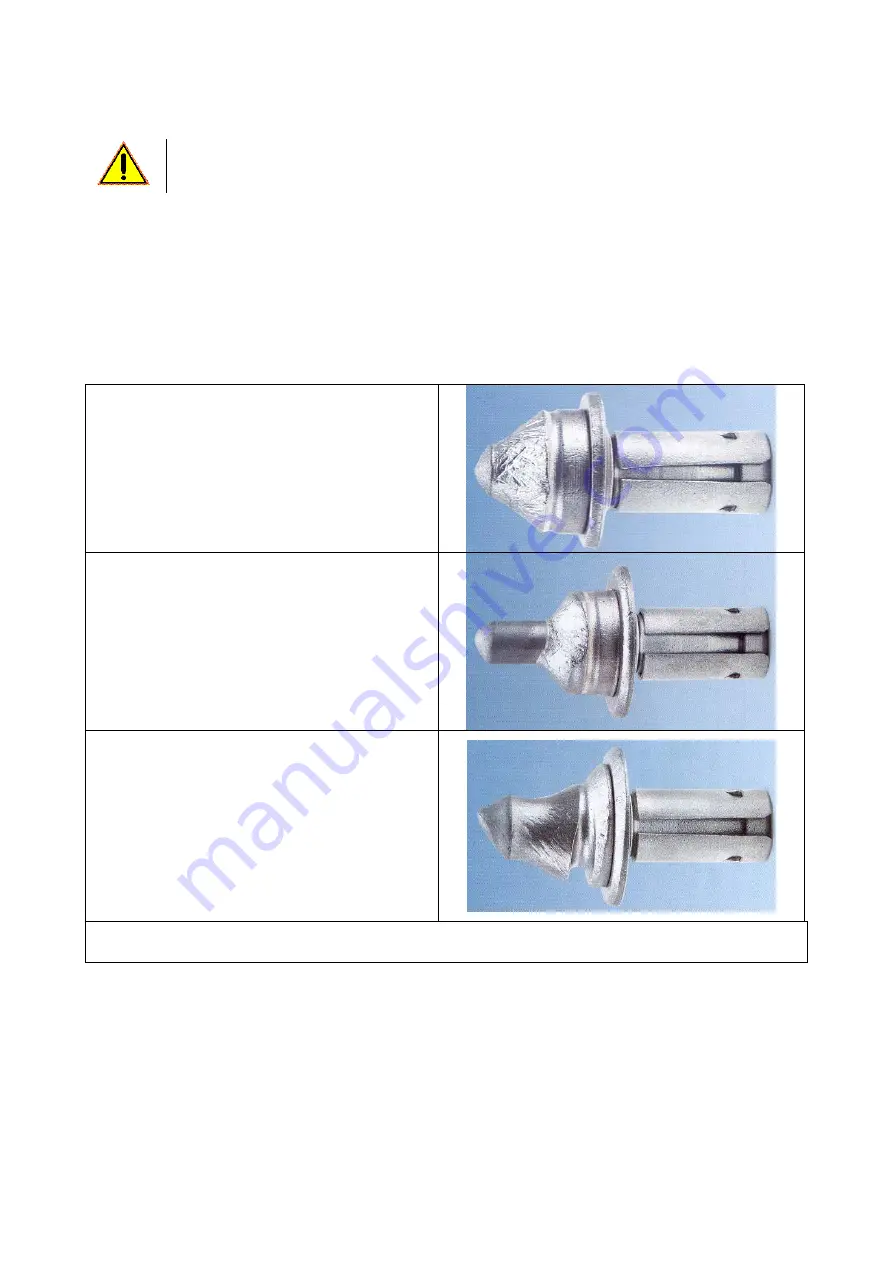
38
10.2
Tool integrity assessment (teeth)
Before leaving the operator’s seat on the prime mover, make sure the area is flat, the
prime mover is stabilised, the machine is resting on the ground, and the keys have been
removed from the ignition.
Every tooth is subject to constant wear due to contact with the material cut. The greater the wear, the lesser
the tooth’s capacity for breaking into the material.
What is more, as tooth wear increases, the work progress slows. This means that, if you use very worn teeth,
the machine’s productivity drops noticeably.
Replacing the teeth promptly will ensure the machine is always used to its full potential.
It is always worthwhile checking for signs of wear as the tooth only really performs well throughout its working
life if it is worn down in the best possible way.
TOOTH WEAR
A: Features of an ideally worn tooth
The remaining part of the carbide tip is
symmetrically shaped
The body has a uniform, tapered shape,
The body has enough bulk to support the carbide
core.
Tooth is worn and needs replacing.
B:
Tooth that has worked on soft materials
If a tooth has been used on an overly soft
material, the body will wear quicker than the tip,
and the tip will end up snapping off. Additionally,
the altered tooth shape will increase tooth holder
wear.
Tooth is worn and needs replacing.
C: Tooth which has not rotated properly
The teeth which are subject to uneven use, wear
out fast. Wear of this kind is usually due to the
tooth not turning round in its holder. The wear may
be due to a worn tooth holder or the presence of
small particles of planed material between the
shank of the tooth and the seat in which it is fitted.
In this instance, clean the seat and lubricate with
diesel fuel.
Tooth is worn and needs replacing.
N.B.
the tooth shown in the picture is a standard model. but the concepts apply to all teeth models.
Содержание PL 4520
Страница 14: ...14...
Страница 60: ...60 IMPORTER...
















































